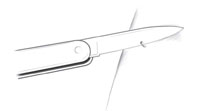In this article, you will find:
A taste of treatment
Another crucial difference between bees and wasps lies in what happens when they sting. When a bee stings, it leaves both its stinger and a venom sac inside the victim's skin. Even though there's retribution in the fact that the bee “committed suicide,” its venom sac gets implanted in the skin and continues to release foreign secretions.
When a wasp stings, it leaves behind only a stinger, no excess venom. And sometimes it doesn't even leave the stinger. Sometimes the stinger stays intact on the insect, enabling it to sting again and again. It's not uncommon for one yellow jacket to sting seven or more times before its stinger “drops off” in a person's skin.
However, treatment is the same for bee stings (which leave venom sacs and stingers) and wasp stings (which leave stingers but no sacs).
Ouch!
Never try to remove a stinger by pulling at it or using tweezers. This puts pressure on the stinger and squeezes it, which injects even more venom into the skin!
- If the stinger is clearly visible in the skin, gently “scoop” it out with the edge of a toothpick, a long fingernail, or a pocket knife.
- Wash the affected area with soap and cold water. Then apply ice in a compress or wrapped in a towel or cloth to alleviate pain and slow down the body's venom absorption. (Always wrap the ice before placing it on the skin; plain ice sticks and causes more irritation.)
- Apply calamine lotion or a mixture of baking soda and water.
- If the victim is not allergic, you can give him or her aspirin, ibuprofen, or acetaminophen to help relieve the pain. If that seems to take care of it, the treatment is finished. If you are treating a more serious bee sting or multiple stings, proceed with the steps.
- For multiple stings, soak the entire affected area in cool water. If necessary, place the victim in a tub of cool water. Add one tablespoon of baking soda for every quart of water.
- If the victim has an allergic reaction, call for emergency help. Then have the victim lie in a prone position. Keep the affected area immobile and, if possible, lower than the heart. This will slow down the venom's circulation.
- Tie a strip of cloth, a belt, a watchband, or the sleeve of a shirt two to four inches above the affected area. The bandage should be snug, but loose enough to fit a finger underneath it. (This ensures that you are not completely cutting off circulation.)
- If the affected area starts to swell near the strip of cloth, tie another strip two to four inches above the first. Then remove the first strip.

using an upward prying motion.